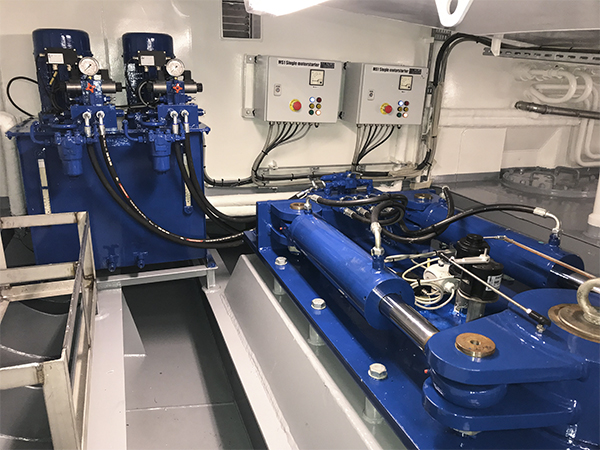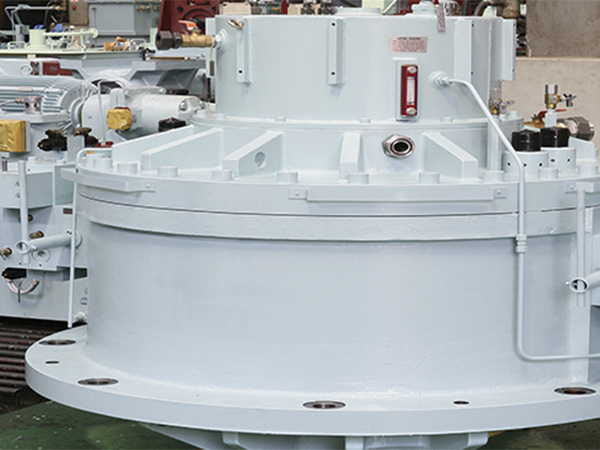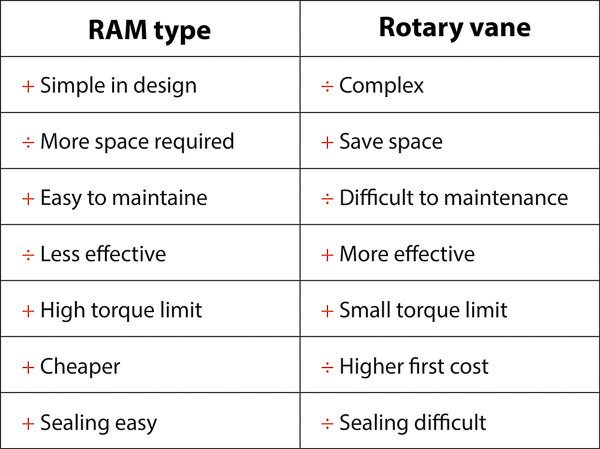An In-Depth Look at maritime steering gears
In this article, we will explore two essential types of steering gear systems commonly used on ships—the Rotary vane steering gear and the RAM type steering gear. Join us as we delve into their functions, advantages, and key distinctions that ensure the smooth operation and precise handling of vessels. With our comprehensive insights, you will gain a deeper understanding of the mechanisms behind these robust systems and how they contribute to smoother sailing experiences across the high seas.
Watch a short video of a ram type steering gear mounted on the Norwegian fishing vessel Skulebas.
What is the principle of steering gear on a ship?
What is a ship steering gear?
Steering gear in a ship is a crucial component of the vessel's navigation system, allowing for controlled changes in direction. There are various types of steering gears, each suited to different types of ships and operational needs.
Steering gear principle
The general principle of a steering gear system involves converting the input from the ship's helmsman (or autopilot) into mechanical motion that turns the vessel's rudder, thereby controlling the direction of the ship.
-
Helmsman input: The process starts when the helmsman turns the ship's wheel or inputs a command via an autopilot system.
-
Hydraulic signal generation: This input is converted into an electrical signal, which is sent to a hydraulic power unit (HPU). The HPU then pumps hydraulic fluid under pressure into the system.
-
Steering gear movement: The pressurized hydraulic fluid is directed into the steering gear, which is connected to the rudder stock.
-
Rudder Movement:The steering gear turn the rudder stock, which in turn moves the rudder to the desired angle, either to port or starboard.
-
Course Adjustment: The rudder's movement deflects water flow at the stern of the ship, causing the vessel to change direction.
Key Components of a Steering Gear system
The primary components of a RAM type steering gear include:
- Steering control system: The command center where the helmsman controls the ship’s direction. Inputs made here are sent to the other components to execute the desired maneuvers.
- Motor starter: This vital component initiates the operation of the motor that sets the pump unit in motion. It manages the electrical power to the motor, ensuring a smooth start and efficient continued operation.
- Hydraulic power unit (HPU): The heart of the hydraulic system that powers the steering mechanism, generating the necessary pressure to actuate the steering gear.
- RAM- / Rotary vane steering gear: The steering gear mechanism that physically turns the rudder based on commands from the control panel.
- Rudder: A flat, steel piece located at the stern, pivotal in steering the ship by deflecting water flow to cause the vessel to turn.
This illustration provides insight into the intricate components that ensure smooth and precise navigation of marine vessels, like those found in an AS SCAN steering system.

Overview of the main components in a AS SCAN steering system
Other system components:
- Rotary Valve: This component controls the flow of hydraulic fluid in response to the movement of the steering wheel or autopilot system.
- Relief Valves: They protect the hydraulic system from excessive pressure buildup by allowing excess fluid to escape when needed.
- Rudder Stock: A vertical rod connected to the rudder that transmits rotational motion from the ram assembly to steer the vessel.
- Actuators/Steering Cylinder: These components convert hydraulic power generated by the pumps and transmitted via control valves into mechanical motion.
- Non-return Valves: These valves prevent backflow of hydraulic fluid, ensuring that any leakage does not compromise the operation of the steering gear system.
How does a RAM Type steering gear work?
A RAM type steering gear consists of one or more hydraulic cylinders, known as rams, and a tiller arm. The tiller arm is attached to the rudder stock and connects the ram’s piston rod to the rudder stock. It acts as a lever arm, amplifying the force generated by the ram to turn the rudder. These rams operate by moving in opposite directions to turn the rudder, allowing the ship to change direction.

AS SCAN steering gear mounted onboard the Swedish newbuilding GG 500 - Vingaskär
Steering gear onboard Karstensens Shipyard newbuilding, such as the AS SCAN steering gear mounted onboard the Swedish newbuilding GG 500 - Vingaskär, showcases the effectiveness of this type of system.
How does a rotary vane steering gear work?
The system consists of a rotor, that is a central component that holds the rotary vane in place and is responsible for rotating it within the chamber. It is connected to the rudder stock, and a stator, which is fixed to the ship's structure. The rotor has vanes attached to it, and the stator has matching vanes, creating compartments between them. When steering is required, hydraulic fluid is pumped into specific compartments between the rotor and stator. The pressure in these compartments acts on the vanes, causing the rotor to rotate. As the rotor turns, it moves the rudder stock, which in turn adjusts the angle of the rudder, steering the ship in the desired direction.

Rotery vane steering gear in factory.
Advantages and disadvantages of RAM type steering gear
Advantages:
- High power and efficiency:RAM type steering gears are capable of generating significant force, making them suitable for large vessels that require robust steering systems to handle heavy loads and harsh marine conditions.
- Reliability: The design of RAM type systems is mechanically simple and robust, with fewer moving parts compared to other types of steering gears. This simplicity enhances their reliability and reduces the likelihood of mechanical failure.
- Durability: These systems are built with high-quality materials, such as marine-grade steel, which ensures durability and long-lasting performance even in demanding environments.
- Low Maintenance: Due to their straightforward design, RAM type systems require less maintenance compared to more complex systems. This results in lower operational costs and minimal downtime for repairs.
Disadvantages:
-
Space Requirements: RAM type systems are generally larger and require more space for installation compared to compact systems like rotary vane gears. This can be a limitation for vessels with restricted space in the steering compartment.
-
Weight: The robust construction of RAM type systems also means they are heavier, which can add to the overall weight of the vessel, potentially affecting performance and fuel efficiency.
-
Limited Rudder Movement: The range of rudder movement in RAM type systems is limited by the stroke length of the cylinders and the mechanical design of the system, which might not provide as much flexibility as other systems.
-
Response Time: While precise, the response time in adjusting the rudder position might be slower compared to more dynamic systems like rotary vane steering gears.
Advantages and Disadvantages of Rotary Vane Type Steering Gear
Advantages:
-
Compact Design: Rotary vane steering gears are known for their compactness, making them ideal for vessels with limited space in the steering gear compartment. Their smaller footprint allows for more efficient use of space on board.
-
High Efficiency: The design of the rotary vane system allows for a smooth and continuous flow of hydraulic fluid, resulting in efficient operation with minimal energy loss. This contributes to faster response times and smooth steering actions.
-
Reduced Noise and Vibration: Due to the continuous and smooth fluid flow within the system, rotary vane steering gears operate with lower noise levels and reduced vibration, creating a quieter and more comfortable working environment for the crew.
-
Wide Range of Rudder Movement: Rotary vane systems often allow for a broader range of rudder movement, up to 65° depending on the design, providing greater flexibility in steering.
Disadvantages:
-
Complexity and Maintenance: Rotary vane systems are mechanically more complex than RAM type systems, with more moving parts. This complexity can lead to higher maintenance requirements and potentially more frequent repairs.
-
Potential for Complete Steering Loss: If an internal fault occurs, such as a leak within the hydraulic compartments, there is a risk of complete steering loss. This is a significant drawback, especially compared to RAM type systems, where partial functionality can still be maintained if one component fails.
-
Higher Cost: The initial installation cost of rotary vane steering gears is generally higher than RAM type systems. This can be a consideration for shipbuilders or operators looking to manage budget constraints.
-
Sensitivity to Hydraulic Fluid Quality: The performance of rotary vane steering gears can be highly dependent on the quality and cleanliness of the hydraulic fluid. Contaminated or degraded fluid can lead to system inefficiencies or failures, necessitating strict maintenance protocols.
Comparison between rotary vane and ram type steering gear - and which should I choose?
When selecting the appropriate steering gear for marine applications, understanding the key differences between rotary vane and ram type systems is crucial. The table below offers a short overview of the pros and cons associated with each type of steering gear, making it easier to weigh the benefits against the drawbacks for your specific application needs.

Which Steering Gear Should I Choose?
The choice between a RAM type and rotary vane steering gear depends on several factors related to your vessel's requirements. Choose a RAM type steering gear if your priority is robustness, reliability, and handling heavy-duty applications. Go for a rotary vane steering gear if space efficiency, precise control, and smooth operation are more important for your vessel’s needs. Consider consulting with a marine engineering expert like AS SCAN to evaluate the specific requirements of your vessel before making a decision.
Another important factor to consider for your steering system is the decision between dual or single rudder systems. This choice can be crucial when selecting steering gear, as it can impact maneuverability and overall vessel performance.

